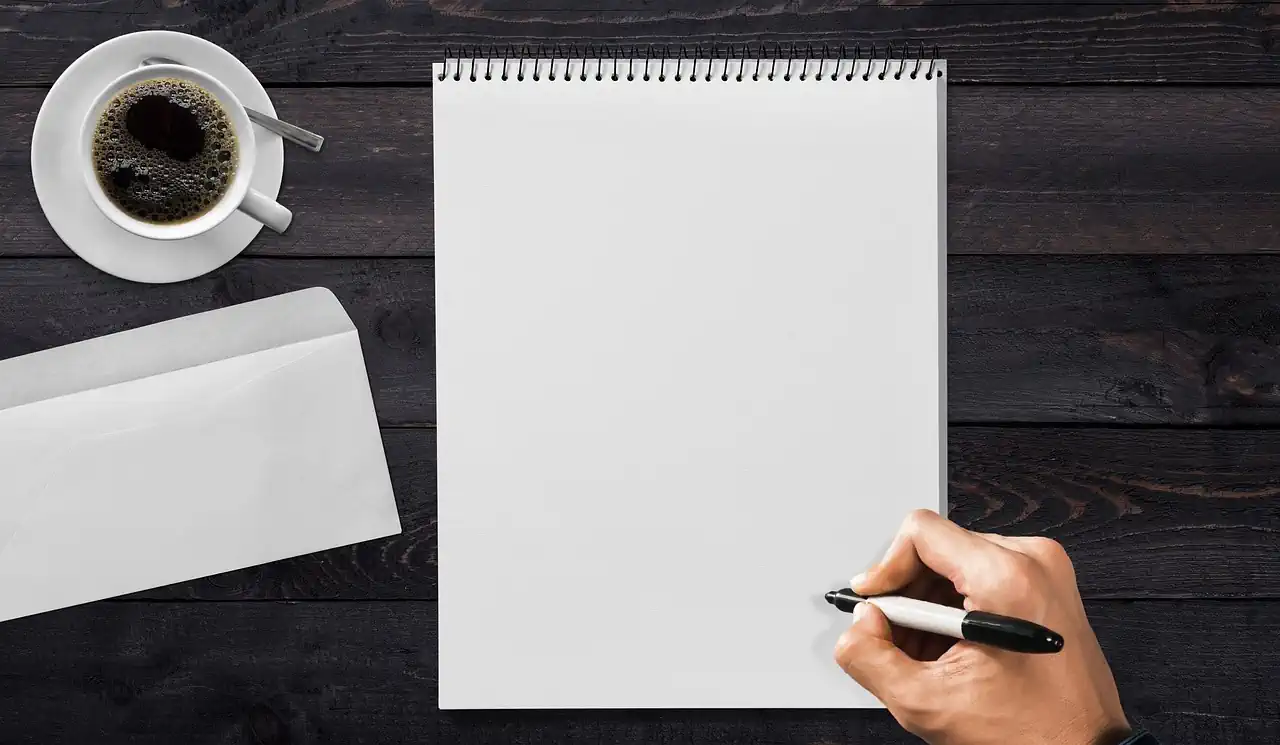How To Save Money Quora
10 Simple Ways to Cut Your Monthly Expenses


Saving money is a goal that many people have, but it can be difficult to know where to start. Fortunately, there are many simple ways to cut your monthly expenses and start saving money. In this article, we will explore 10 simple ways to save money on Quora.
1. Use Quora for Research
Quora is a great resource for research. Instead of paying for expensive market research or consulting services, you can use Quora to gather insights from experts and industry professionals. By using Quora for research, you can save money and get valuable insights that can help you make better decisions.
2. Use Quora for Networking
Networking is an important part of any business or career. Quora is a great platform for networking with other professionals in your industry. By connecting with others on Quora, you can build relationships, learn from others, and potentially find new opportunities.
3. Use Quora for Marketing
Quora can also be a powerful marketing tool. By answering questions related to your industry, you can establish yourself as an expert and build your brand. This can lead to increased visibility, credibility, and ultimately, more business.
4. Use Quora for Learning
Quora is a great platform for learning. By following topics related to your industry, you can stay up-to-date on the latest trends and developments. This can help you make better decisions and stay ahead of the competition.
5. Use Quora for Inspiration
Quora can also be a source of inspiration. By reading about the experiences and insights of others, you can gain new perspectives and ideas. This can help you come up with new solutions to problems and innovate in your industry.
6. Use Quora for Recruiting
Quora can also be a powerful recruiting tool. By answering questions related to your industry, you can showcase your expertise and attract potential candidates. This can help you find the right talent for your business or organization.
7. Use Quora for Customer Service
Quora can also be used for customer service. By answering questions and addressing concerns on Quora, you can provide excellent customer service and build loyalty with your customers. This can lead to increased customer satisfaction and retention.
8. Use Quora for Collaboration
Quora can also be a platform for collaboration. By connecting with others in your industry, you can work together on projects and initiatives. This can lead to increased efficiency, productivity, and innovation.
9. Use Quora for Personal Development
Quora can also be a tool for personal development. By reading about the experiences and insights of others, you can learn new skills and improve yourself. This can help you grow both personally and professionally.
10. Use Quora for Entertainment
Finally, Quora can also be a source of entertainment. By reading interesting and informative answers, you can learn new things and be entertained at the same time. This can help you relax and unwind after a long day.
In conclusion, Quora is a versatile platform that can be used for a variety of purposes. By using Quora for research, networking, marketing, learning, inspiration, recruiting, customer service, collaboration, personal development, and entertainment, you can save money and achieve your goals. So why not give Quora a try today? You might be surprised at what you can accomplish.
The Ultimate Guide to Couponing for Beginners
Are you tired of spending too much money on groceries and household items? Do you want to learn how to save money on your everyday purchases? Look no further than couponing! Couponing is a great way to save money on the things you need and want. In this ultimate guide to couponing for beginners, we will cover everything you need to know to start saving money today.
First, let’s talk about where to find coupons. The most common place to find coupons is in your Sunday newspaper. Many retailers also offer coupons on their websites or through their loyalty programs. You can also find coupons on coupon websites such as Coupons.com or RetailMeNot. Another great way to find coupons is by following your favorite brands on social media. They often offer exclusive coupons and deals to their followers.
Once you have your coupons, it’s important to organize them. You can use a coupon binder or a coupon wallet to keep your coupons organized and easily accessible. Make sure to keep your coupons up to date and remove any expired coupons.
Next, it’s time to plan your shopping trip. Look at the weekly ads for your favorite stores and see what items are on sale. Match up your coupons with the sale items to maximize your savings. It’s also a good idea to make a list of the items you need before you go shopping. This will help you stay on track and avoid impulse purchases.
When you get to the store, make sure to read the fine print on your coupons. Some coupons have restrictions or exclusions, so it’s important to know the details before you try to use them. Also, make sure to follow the store’s coupon policy. Some stores have limits on the number of coupons you can use or may not accept certain types of coupons.
Another great way to save money is by stacking coupons. This means using a store coupon and a manufacturer coupon on the same item. Some stores also offer digital coupons that can be stacked with paper coupons for even more savings.
Don’t forget to take advantage of cashback apps and rebate programs. Apps like Ibotta and Checkout 51 offer cashback on select items. Rebate programs like SavingStar offer rebates on certain products when you link your store loyalty card.
Finally, it’s important to stay organized and keep track of your savings. Keep a log of how much you save each week and set a goal for how much you want to save each month. This will help you stay motivated and see the benefits of couponing.
In conclusion, couponing is a great way to save money on your everyday purchases. By finding coupons, organizing them, planning your shopping trip, and taking advantage of cashback apps and rebate programs, you can maximize your savings. Remember to stay organized and keep track of your savings to stay motivated. Happy couponing!
How to Create a Budget and Stick to It
Saving money is a goal that many people have, but it can be difficult to achieve without a plan. One of the best ways to save money is by creating a budget and sticking to it. In this article, we will discuss how to create a budget and provide tips on how to stick to it.
The first step in creating a budget is to determine your income. This includes any money you receive from your job, investments, or other sources. Once you have determined your income, you need to calculate your expenses. This includes everything from rent or mortgage payments to groceries and entertainment.
Once you have calculated your income and expenses, you can create a budget. Start by listing all of your expenses and categorizing them. For example, you may have categories for housing, transportation, food, and entertainment. Next, assign a dollar amount to each category based on your income and expenses.
It is important to be realistic when creating your budget. If you set unrealistic goals, you are more likely to fail. Be honest with yourself about your spending habits and make adjustments as needed.
Once you have created your budget, it is important to stick to it. This can be challenging, but there are several tips that can help. First, track your spending. This will help you see where your money is going and identify areas where you can cut back.
Another tip is to set goals. This can be as simple as saving a certain amount of money each month or paying off a credit card. Having a specific goal in mind can help you stay motivated and focused.
It is also important to be flexible. Life happens, and unexpected expenses can arise. If this happens, adjust your budget accordingly. This may mean cutting back in other areas or finding ways to increase your income.
One way to increase your income is by finding ways to save money. There are many resources available online, including Quora, where you can find tips and advice on how to save money. Some popular topics include frugal living, couponing, and budgeting.
In addition to finding ways to save money, it is important to avoid unnecessary expenses. This may mean cutting back on eating out or canceling subscriptions you don’t use. It can be helpful to review your budget regularly and make adjustments as needed.
Finally, it is important to stay motivated. Saving money can be challenging, but it is also rewarding. Keep your goals in mind and celebrate your successes along the way. Whether it’s paying off a debt or reaching a savings goal, every small step counts.
In conclusion, creating a budget and sticking to it is one of the best ways to save money. Start by determining your income and expenses, creating a budget, and tracking your spending. Be flexible, set goals, and find ways to save money. With a little effort and determination, you can achieve your financial goals and enjoy the benefits of a healthy financial future.
5 DIY Home Improvement Projects That Will Save You Money
Are you looking for ways to save money on home improvement projects? Look no further than these five DIY projects that can help you save money while improving your home.
1. Paint Your Walls
One of the easiest and most cost-effective ways to update your home is by painting your walls. A fresh coat of paint can transform a room and make it feel brand new. Plus, painting your walls yourself can save you hundreds of dollars in labor costs.
When choosing paint, opt for a high-quality brand that will last longer and require fewer coats. You can also save money by purchasing paint in bulk or waiting for sales at your local home improvement store.
2. Install a Programmable Thermostat
Installing a programmable thermostat can help you save money on your energy bills by automatically adjusting the temperature in your home based on your schedule. This means you can set the temperature to be cooler when you’re away from home and warmer when you’re there, without having to remember to adjust it manually.
Programmable thermostats are relatively easy to install and can be purchased for as little as $30. Plus, they can save you up to 10% on your energy bills each year.
3. Replace Your Faucets
Replacing your faucets can give your bathroom or kitchen a fresh new look without breaking the bank. Plus, newer faucets are often more efficient and can help you save money on your water bill.
When choosing new faucets, look for models that are easy to install and come with all the necessary hardware. You can also save money by purchasing faucets in bulk or waiting for sales at your local home improvement store.
4. Install Energy-Efficient Lighting
Switching to energy-efficient lighting can help you save money on your energy bills while also reducing your carbon footprint. LED bulbs are the most energy-efficient option and can last up to 25 times longer than traditional incandescent bulbs.
While LED bulbs can be more expensive upfront, they can save you money in the long run by using less energy and lasting longer. You can also save money by purchasing LED bulbs in bulk or waiting for sales at your local home improvement store.
5. Refinish Your Cabinets
If your kitchen cabinets are looking tired and outdated, consider refinishing them instead of replacing them. Refinishing your cabinets can give them a fresh new look without the cost of a full replacement.
To refinish your cabinets, start by removing the doors and hardware. Then, sand down the surfaces and apply a new coat of paint or stain. You can also add new hardware for an extra touch of style.
In conclusion, there are many DIY home improvement projects that can help you save money while improving your home. From painting your walls to installing energy-efficient lighting, these projects can give your home a fresh new look without breaking the bank. So why not give them a try and see how much you can save?
The Benefits of Meal Planning and Batch Cooking
Are you tired of overspending on groceries and eating out? Do you want to save money and eat healthier? Meal planning and batch cooking may be the solution you’ve been looking for.
Meal planning involves deciding what meals you will eat for the week and creating a grocery list based on those meals. Batch cooking involves preparing multiple servings of a meal at once and storing them for later use. Both of these techniques can save you time and money in the long run.
One of the biggest benefits of meal planning and batch cooking is that it reduces food waste. When you plan your meals ahead of time, you are less likely to buy unnecessary items at the grocery store that may go to waste. Additionally, when you batch cook, you can use up ingredients that may have otherwise gone bad. This not only saves you money, but it also helps the environment by reducing the amount of food that ends up in landfills.
Another benefit of meal planning and batch cooking is that it can help you eat healthier. When you plan your meals ahead of time, you have more control over what you eat. You can choose healthier options and avoid the temptation of unhealthy snacks and fast food. Additionally, when you batch cook, you can control the ingredients and portion sizes of your meals, which can help you maintain a healthy diet.
Meal planning and batch cooking can also save you time. When you plan your meals ahead of time, you don’t have to spend time each day deciding what to eat. Additionally, when you batch cook, you can prepare multiple meals at once, which can save you time during the week. This is especially helpful for busy individuals who don’t have a lot of time to cook each day.
So, how do you get started with meal planning and batch cooking? First, decide what meals you want to eat for the week. Consider your schedule and choose meals that are easy to prepare on busy days. Next, create a grocery list based on the meals you have chosen. Stick to the list when you go to the store to avoid buying unnecessary items. When you get home, start batch cooking. Choose a day when you have a few hours to spare and prepare multiple servings of your chosen meals. Store the meals in the fridge or freezer for later use.
In conclusion, meal planning and batch cooking are great ways to save money, eat healthier, and save time. By reducing food waste, controlling what you eat, and preparing meals ahead of time, you can improve your overall health and well-being. So, why not give it a try? Start planning your meals and batch cooking today and see how much money and time you can save.
How to Negotiate Your Bills and Save Money
Are you tired of paying high bills every month? Do you want to save money but don’t know where to start? Negotiating your bills is a great way to save money and it’s easier than you think. In this article, we will discuss some tips on how to negotiate your bills and save money.
Firstly, it’s important to know what bills you can negotiate. Some bills that are negotiable include cable and internet bills, phone bills, and even your rent. Before you start negotiating, do some research on the average prices for these bills in your area. This will give you an idea of what you should be paying and what you can negotiate for.
When negotiating your bills, it’s important to be polite and friendly. Remember, the person on the other end of the phone is just doing their job. Explain your situation and why you want to negotiate your bill. For example, if you’re struggling to pay your bills, let them know. They may be able to offer you a better deal or a payment plan.
Another tip is to be prepared. Before you call, make a list of the bills you want to negotiate and the reasons why. This will help you stay organized and focused during the call. It’s also a good idea to have any relevant documents, such as bills or contracts, on hand in case you need to refer to them.
When negotiating your bills, don’t be afraid to ask for discounts or promotions. Many companies offer discounts for new customers or for bundling services. If you’ve been a loyal customer for a long time, ask if they have any loyalty programs or discounts available.
If you’re not getting the results you want, don’t give up. Ask to speak to a supervisor or manager. They may have more authority to offer you a better deal. If you’re still not satisfied, consider switching providers. Many companies offer promotions for new customers, so you may be able to save money by switching.
Another way to save money on your bills is to reduce your usage. For example, if you’re paying a high electricity bill, try turning off lights and appliances when you’re not using them. You can also lower your thermostat in the winter and raise it in the summer to save on heating and cooling costs.
In conclusion, negotiating your bills is a great way to save money. Remember to be polite and friendly, be prepared, and don’t be afraid to ask for discounts or promotions. If you’re not getting the results you want, consider switching providers or reducing your usage. With these tips, you’ll be on your way to saving money on your bills in no time.
The Importance of Building an Emergency Fund and How to Do It
Saving money is an essential part of financial planning. It is a habit that can help you achieve your financial goals and secure your future. However, saving money can be challenging, especially if you don’t know where to start. Fortunately, there are many ways to save money, and one of the best places to get advice on saving money is Quora.
One of the most important things you can do to save money is to build an emergency fund. An emergency fund is a savings account that you can use to cover unexpected expenses, such as medical bills, car repairs, or job loss. Having an emergency fund can help you avoid going into debt or relying on credit cards to cover these expenses.
To build an emergency fund, you need to start by setting a savings goal. A good rule of thumb is to save at least three to six months’ worth of living expenses. This may seem like a lot, but it is essential to have enough money to cover your expenses in case of an emergency.
Once you have set your savings goal, you need to start saving money. One of the best ways to do this is to create a budget. A budget will help you track your expenses and identify areas where you can cut back. You can use online tools or apps to create a budget, or you can do it manually using a spreadsheet.
Another way to save money is to automate your savings. You can set up automatic transfers from your checking account to your savings account each month. This will help you save money without even thinking about it.
You can also save money by reducing your expenses. Look for ways to cut back on your monthly bills, such as canceling subscriptions you don’t use or negotiating lower rates for your cable or internet service. You can also save money by shopping around for better deals on insurance, groceries, and other essentials.
In addition to building an emergency fund, it is also important to have a plan for your long-term savings. This may include saving for retirement, a down payment on a house, or your children’s education. You can use Quora to get advice on how to save for these goals and what types of accounts to use.
When it comes to saving money, it is important to be patient and consistent. Saving money is a long-term goal, and it may take time to see the results. However, by building an emergency fund and saving for your long-term goals, you can achieve financial security and peace of mind.
Conclusion
In conclusion, saving money is an essential part of financial planning, and building an emergency fund is a crucial first step. By setting a savings goal, creating a budget, automating your savings, and reducing your expenses, you can start saving money today. Quora is a great resource for getting advice on how to save money and achieve your financial goals. Remember to be patient and consistent, and you will be on your way to financial security in no time.







